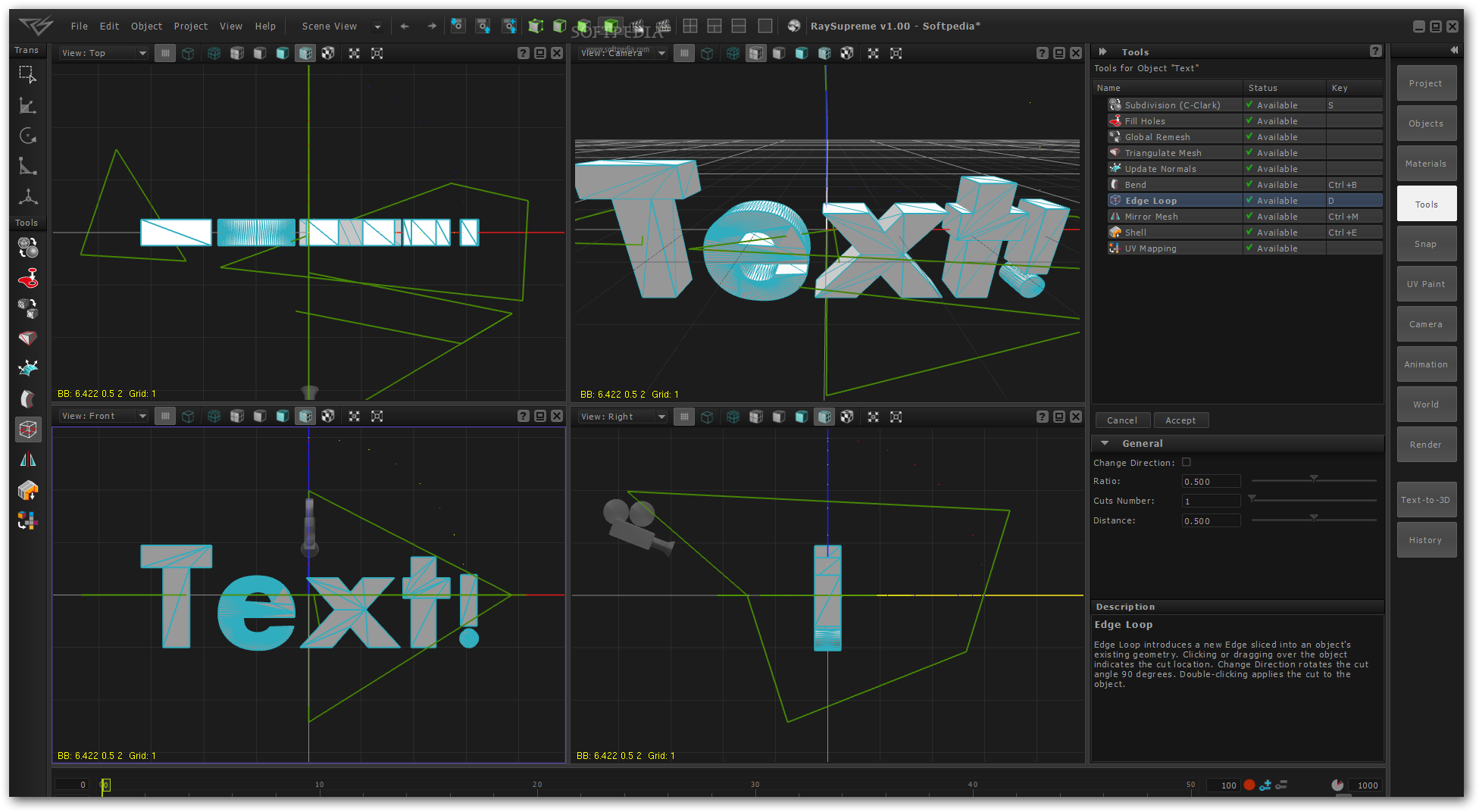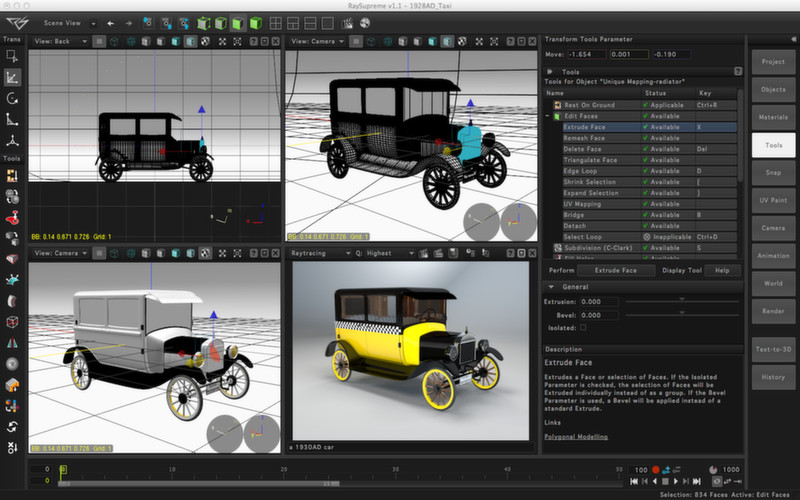

Section 3 explains the methodology developed to design a WAIM layer. Section 2 describes the topology that is used for the WAIM application and its characterization in an EC conceived to work with oblique incidence.


For the methodology presented in this publication, a specific radiating element has been used, but the methodology is valid for any other element. This extension is a great contribution because characterizing the structure for oblique incidence is necessary for WAIM applications. In order to synthesize the WAIM, this paper proposes an improved EC that also accounts for the incident angle. Thus far, the structure has been employed as a polarizing radome, and it was modeled by an EC that was only valid for normal incidence. It works as a simple waveguide that allows the excitation of low dispersive transverse-electromagnetic (TEM) modes. The WAIM proposed in this article is based on a 3D structure that has been proposed by some of the authors.
Raysupreme 3d text to 3d plus#
This strategy is very useful to know the response of the global structure (antenna plus WAIM) without the need for a full-wave simulation, which highly reduces the computing time and the needed resources. On the other hand, the ECs change the geometrical parameters of the unit-cell according to the EC elements required (an optimization process is also present but at the end of the design). The optimization algorithms take into account all the degrees of freedom from a unit-cell and adjust them until obtaining the desired response. Their design methodologies can also be classified into those that make use of optimization algorithms during all of the design process, or others that use an equivalent circuit (EC) with which the cell is modeled. In addition, it avoids the use of dielectric materials in the structure, preventing problems such as intrinsic losses in these materials and the outgassing phenomenon that dielectrics may suffer when they are used in space.Ĭlassical WAIM solutions can be classified according to their topology, such as single dielectric layers, single layer metamaterials, multilayer metamaterials and 3D WAIMs.
Raysupreme 3d text to 3d full#
Indeed, 3D additive manufacturing methods allow to build a full structure in just one metallic piece, avoiding the use of connections or welds that could cause problems or deformations in the final response, as well as increasing the fabrication process speed. This article proposes an innovative topology and the associated design methodology for a WAIM that can be built employing only metal. Such layers are commonly known as wide-angle impedance matching (WAIM) surfaces. Other methods try to alleviate the problem while allowing for electrical scanning, which consist of the use of matching networks in the antenna elements, reconfigurable active structures or matching layers placed above the antenna. Some methods have been developed to avoid these problems, such as the use of mechanical steering. It is particularly difficult to conceive an element for a phased array that scans at a wide angle, because its periodicity has to be smaller than 0.5 λ to avoid grating lobes. As it is well known, while steering the beam, the coupling between the elements in the array may deteriorate the antenna active matching, possibly resulting in scan blindness. Wide scanning capabilities are usually required when using radar systems, modern communication systems, such as in 5G applications, or communications with low earth orbit (LEO) satellites.


 0 kommentar(er)
0 kommentar(er)
